Latest Art & Culture
Ninth Art: A case for comics
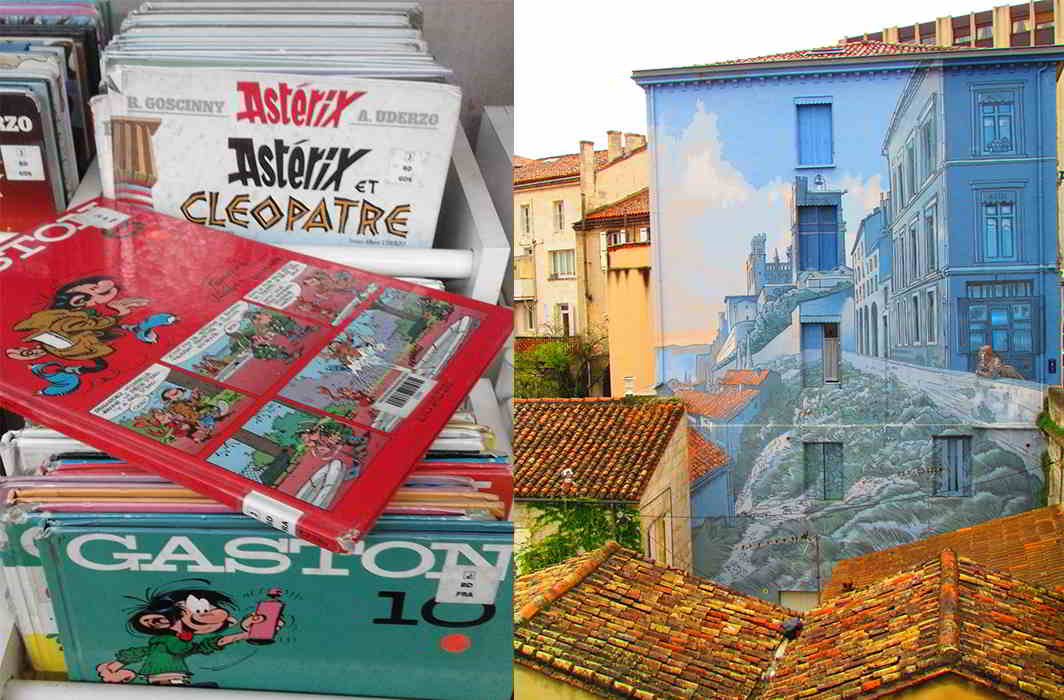
[vc_row][vc_column][vc_column_text]The distance between the artistic sensibilities of the French people and our own widens when you find out that the French call comic strips the Ninth Art!
By Shailaja Paramathma
The fringe status of dance, music, painting and drama in schools in India is unmistakable. They are called “extra-curricular” activities and are considered a frill. The concern that a parent or teacher shows if their child indulges in an art form consistently undervalues the life skills that art and creativity teach to a person. The so-called “non-academic” nature of the activities results in their being taught for appreciation alone and not as a means to enhance learning in other subjects.
On the other hand, France recognizes nine fine arts. Dance, music, cinema are, of course, on the list but the distance between their artistic sensibilities and ours widens when they name comic strips as the Ninth Art. The Franco-Belge Bandes dessinée or BD as they are popularly called (pronounced Bay Day); literally just mean a drawn strip.
Originating from German philosopher Georg Wilhelm Friedrich Hegel’s Lectures on Aesthetics, which was compiled in 1835, BDs in France entered the realm of Fine Art in 1970s.
BD as cultural entity
Every year in January, the “Festival International de la Bande Dessinée” takes place in the sleepy town of Angoulême, in the southwest of France. Known as Angoulême International Comics Festival in English, this once fortified town wakes up to a stunning footfall of over 200,000 people. Thousands of cartoonists and hundreds of journalists attend the four-day event which gives away several prestigious awards, including a lifetime achievement award. In this self-proclaimed “capital of comic strips”, more than 20 commissioned murals exist on the outside walls of buildings.
French and Belgian auction houses such as Artcurial, Ader, Piasa, and Tajan hold annual auctions exclusively for the sale of BDs. And if auction sale figures can be a measure to judge the extent of admiration for these works, then there is some impressive data available: in a 2012 Sotheby’s Paris sale, a 1941 original drawing from the Tintin series, L’Étoile mystérieuse, sold for USD 294,062. Another renowned BD artist, André Franquin, had one of his works from Le trombone illustré sell for USD 193,888. In 2014, the first-ever BD auction at Christie’s in Paris fetched €3,889,500. Call the French a snob now and see if they care!
All that is French
But there is more to these hard-bound BDs than festivals, awards and auctions; they are an important French identity—the moustachioed and plucky comic character Astérix, who first appeared 58 years ago has sold an imposing 325 million copies worldwide in 107 languages. Him and his rotund sidekick, Obélix are relatively well-known in India. Gaffe-prone, anti-hero character Gaston Lagaffe is known mostly to those in India who have at one point in their lives studied French. Nevertheless, he has turned 60 years old this year and 35 million Gaston comics have been sold worldwide, translated into 11 languages.
In 1965, the French named their first satellite Astérix, after the cunning Gaulois and Paris boasts of an Astérix theme park in its periphery. Moreover, Gaston, Tintin and Astérix have appeared on numerous postage stamps, including some stamps from Tajikistan and Kyrgyzstan.
Different types of BD
Traditionally, a mixture of text and drawings that form a narrative is one of the oldest forms of human communication. The style of comics has its ties to the beginning of art itself. The use of a sequence of images to tell a story is found in cave paintings from nearly 40,000 years ago and Egyptian hieroglyphs, religious manuscripts and paintings also follow the same principle.
The comics industry in France and in Belgium is a very developed one—they publish more than 4,000 books every year and the range of themes is broader in France than in the USA, where comics primarily cater to children. Every autumn in France, the media presents reports on the newly published books during the year, including the new comic strip albums.
A wide variety of age-appropriate BDs cover genres from mystery to science fiction and from mythical characters to fantasy and eroticism. So, Philippe Druillet’s surrealist Lone Sloane and Marjane Satrapi’s graphic autobiography Persepolis sit neck and neck with Tintin and Lucky Luke.
Do the French love the underdog?
The superhero is not what makes French comics. In fact, the French comic heroes are more likely to be shrewd or moronic, essentially anti-hero. Gaston Lagaffe, for one, has no qualities; he was intended to be stupid and not handsome or strong. He has been untidily dressed in a pullover and threadbare jeans for six decades. He is an unlucky prankster with a slumped posture who inevitably ends up giving himself electric shocks. But he is endearing and he always means well. An overgrown child full of curiosity whose heart overflows with love for animals; at the end of the day it does not matter that he achieves nothing at work.
Astérix is the very popular pint-sized warrior who with a lot of slyness and a mouthful of a magic potion has managed to save his village from Roman occupation since eons. Superhero he is not, superhuman strength he gets when he drinks the magic potion but even without it, his life-loving individualism is a force to reckon with.
The tradition of superhero is American; the French root for the guy with the good heart.[/vc_column_text][/vc_column][/vc_row]
Entertainment
Yashraj Mukhate collaborates with Amit Trivedi for Mann Dhaaga song
In a post circulating on Instagram Yashraj Mukhate talks about his experience of listening to Amit Trivedi’s music and recalls how he had always dreamt of collaborating with Amit Trivedi. He said his dream came true 2 years later in 2024 where he collaborated with Trivedi on the song Mann Dhaaga.
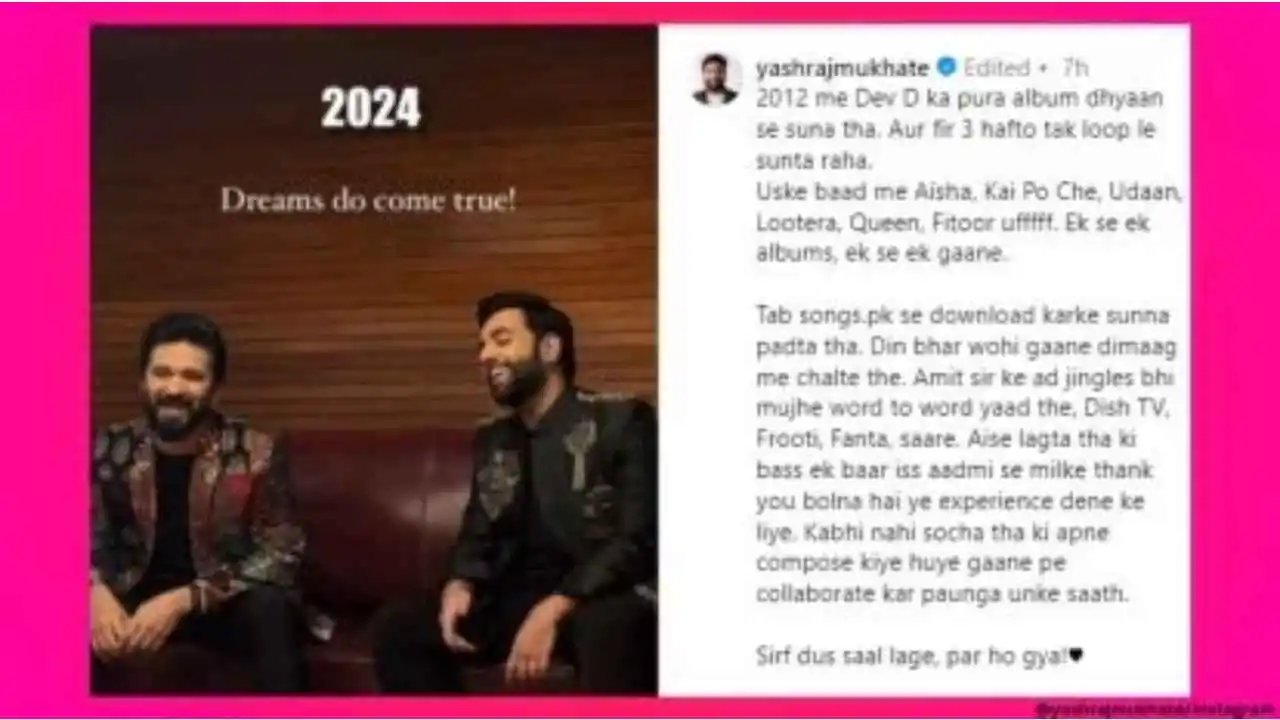
Amit Trivedi is known for his soulful compositions which weave profound lyrics, captivating music lovers. His songs spark a deep desire in aspiring artists to collaborate with him. Music producer and You Tuber Yashraj Mukhate had immense admiration for Trivedi’s artistry. In a post circulating on Instagram Yashraj Mukhate talks about his experience of listening to Amit Trivedi’s music and recalls how he had always dreamt of collaborating with Amit Trivedi.
He said his dream came true 2 years later in 2024 where he collaborated with Trivedi on the song Mann Dhaaga. He wrote that he had been listening to the entire Dev D Album carefully in 2012. And he kept listening to it on loop for 3 weeks. He continued to listen to Amit Trivedi compositions in Aisha, Kai Po Che, Udaan, Lootera, Queen, Fitoor continuously. He said he could not stop himself and became a big fan of the music director. He said he started dreaming of meeting his idol one day and collaborating with him.
He recalled that he had to download songs from songs.pk and listen to them. He said the songs kept running inside his mind all through the day. He added that he even remembered Amit Trivedi’s ad jingles word for Fanta, Frooti, Dish TV and all of them.
Mukhate said he always dreamed of meeting Amit Trivedi and wanted to thank him for giving this experience. The post has gone viral on social media with 96,445 likes till now. Large number of social media user commented on the social media post where one user Parth said the Yashraj Mukhate was truly an inspiration. One user said his dedication had brought him to level. One user said a man should make all his dreams come true by going through one hustle at a time.
Book reviews
The Sattvik Kitchen review: Relook at ancient food practices in modern times
If you are the one looking to embrace healthy food habits without compromising on modern delicacies, then this book is a must read!
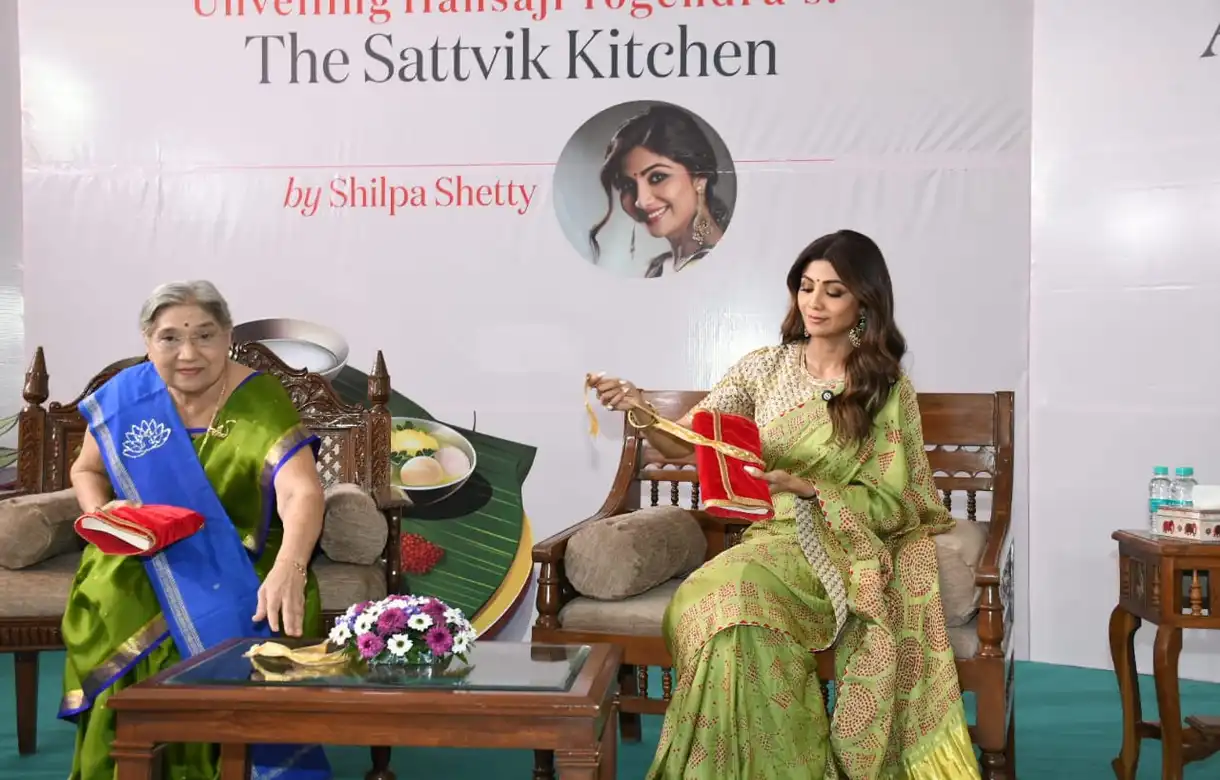
The cacophony of bizarre food combinations across the streets of India has almost taken over the concept of healthy food practices. Amid this, yoga guru Dr Hansaji Yogendra’s The Sattvik Kitchen, published by Rupa, is a forthright work that takes you back to ancient food practices and Ayurveda.
As the subtitle reads, The Art and Science of Healthy Living, the book endows a holistic approach to ayurvedic diet along with modern evidence based nutrition. From Basil-Broccoli Soup to Sprouted Green Gram Salad and Strawberry Oats Smoothie to Mixed Dal Parathas, the book not only provides you with the recipes but also stresses on healthy cooking tips together with nutritional benefits.
Besides, Dr Hansaji Yogendra’s book emphasizes on the traditional methods of food preparation and the advantages of using traditional cookwares like iron and copper vessels. The narrative portrays a balanced approach, knitting traditional wisdom with contemporary scientific understanding.
The author, through her book, sheds light on the principles of Ayurveda and highlights the metamorphic potential of adopting ancient food practices. She explains how our body reacts to food in terms of timing, quantity, manner of consumption and seasonal considerations. The book adeptly reintroduces ancient home remedies tailored to address various contemporary health issues.
Dr Yogendra, in her book, decodes the importance of nutritional knowledge to optimize both immediate and long-term health outcomes. It provides deep insights to understanding the intricate relationship between food choices and overall well-being, weaving Ayurveda with practical perception.
The book not only celebrates food philosophy but also offers a practical view into weight loss, well-being, and the profound impact of dietary choices on both physical and emotional aspects of our lives.
If you are the one looking to embrace healthy food habits without compromising on modern delicacies, then this book is a must read! The book is a roadmap to navigate the challenges of the modern day kitchens.
Book reviews
The Deccan Powerplay review: Bashing Chandrababu Naidu and his legacy
Amar Devulapalli’s book The Deccan Powerplay cornersthe TDP strongman with every petty incident exaggerated a la Baahubali

Mike Marqusee’s War Minus The Shooting is a seminal book on cricket and its influence on culture and politics in the Indian sub-continent during the 1996 Cricket World Cup. Amar Devulapalli’s book The Deccan Powerplay, published by Rupa, sounds like a similar exercise with its clear subtitle, “Reddy, Naidu and the Realpolitik of Andhra Pradesh“. The ambitious sounding subtitle crumbles under the weight of belied expectations of a scholarly treatise on the political interplay between the Reddys, the Kammas and the erstwhile united Andhra Pradesh. One can blame it on one’s own hopes and excuse the author of the lapse since the book has just three people to discuss: YS Rajsekhara Reddy, N. Chandrababu Naidu and Y.S. Jagan Mohan Reddy.
The chief protagonists here are YSR and his son, the incumbent Chief Minister of bifurcated Andhra Pradesh, Jagan Mohan Reddy. The lone villain, and one crafty as a fox if ever there was one, is Chandrababu Naidu. The book devotes a chapter to the corruption cases against Naidu, for which he was arrested in September 2023.
In crafting the narrative, the other heavyweights of Telugu country are discussed in passing, as peripheral players. N.T. Rama Rao does get the starring role, as befits the Telugu star of yesteryear and the founder of the Telugu Desam Party. But even this is fleeting. The Congress, which ruled the state till bifurcation, is portrayed as a faction-infested animal — so what if YSR stayed in the party both as loyal soldier as well as a seasoned yet dynamic general?
The book sets out to demolish the halo surrounding Naidu as the man who brought Information Technology majors to Hyderabad, nay Cyberabad, by beating Bengaluru. His breaking with NTR is depicted as a shrewd, calculated gambit to displace the TDP founder, who was also his father-in-law.
The book is replete with this and more Naidu nitpicking. Naidu took no bullshit from politicians or journalists. He gave it back to the scribes when needed, apart from his favourite media groups, one of the reasons they were not very happy kowtowing to him,
as the book suggests. Instead they would make ostentatious bows to any political alternative merely for being less brusque than the now-out-on-bail former CM.
The book picks apart every claim Naidu ever made and portrays him as an opportunist. The problem with this is possibly because Naidu preceded Jagan Mohan as the rump AP’s last CM and had presumably used every trick in his arsenal to discredit the younger contender.
With Assembly elections due this year, this book reads like a party pamphlet and comes across as a political weapon among the undiscerning. An Instagram handle could have been more useful to this end. But for such a grandly-titled book: the anticlimax is swift and painful.
-

 Cricket news20 hours ago
Cricket news20 hours agoTelugu superstar Mahesh Babu meets SRH captain Pat Cummins, says it is an absolute honour
-

 Entertainment23 hours ago
Entertainment23 hours agoAamir Khan to begin shooting in Delhi for Sitaare Zameen Par next month
-

 2024 Lok Sabha Elections23 hours ago
2024 Lok Sabha Elections23 hours agoBollywood actor Neha Sharma campaigns for her father Ajit Sharma in Bhagalpur, Bihar
-

 Cricket news22 hours ago
Cricket news22 hours agoAB De Villiers criticizes RCB’s decision to let go Yuzvendra Chahal, says it was a hearbreaking moment
-
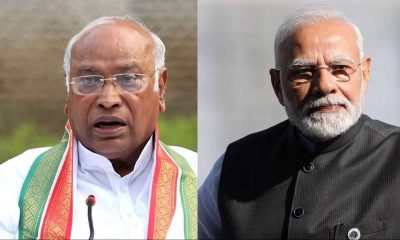
 2024 Lok Sabha Elections20 hours ago
2024 Lok Sabha Elections20 hours agoMallikarjun Kharge writes to PM Modi seeks time to explain Congress’s Nyay Patra
-

 Trending19 hours ago
Trending19 hours agoSocial media user shares video of Air India ground staff throwing expensive musical instruments, video goes viral
-
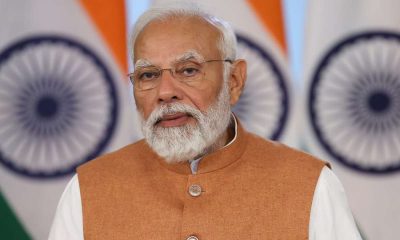
 2024 Lok Sabha Elections4 hours ago
2024 Lok Sabha Elections4 hours agoPM Modi calls for high voter turnout in second phase of Lok Sabha elections 2024, says your vote is your voice
-

 India News3 hours ago
India News3 hours agoSalman Khan house firing case: NIA interrogates arrested shooters Sagar Pal, Vicky Gupta for three hours



